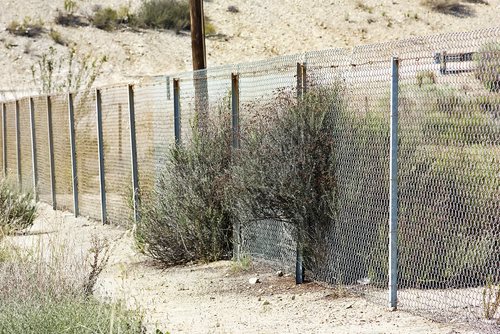
31 Criminal Aliens and Immigration Fugitives Arrested: A Comprehensive Look at Recent Developments
Immigration has been a hot button topic in the United States for decades, and the controversial issue has only been amplified by the current administration’s crackdown on illegal immigration. Immigration and Customs Enforcement (ICE) has been given increased resources and latitude to enforce immigration laws, leading to frequent arrests of criminal aliens and immigration fugitives.
Recently, ICE announced the arrest of 31 criminal aliens and immigration fugitives across the state of New York. In this article, we will take a closer look at the details of these arrests, as well as the broader context of immigration enforcement in the United States.
Overview of Immigration Enforcement in the United States
To understand the significance of these recent arrests, it’s important to have a basic understanding of how immigration enforcement works in the United States. The primary agency responsible for enforcing immigration laws is Immigration and Customs Enforcement (ICE), which operates under the Department of Homeland Security (DHS).
ICE is responsible for identifying, arresting, and deporting individuals who are in the country illegally or who have violated immigration laws. This includes not only individuals who crossed the border illegally, but also those who overstayed their visas, committed crimes while in the country, or violated other immigration regulations.
The Trump administration has been vocal about its desire to crack down on illegal immigration, and has taken measures to increase ICE’s enforcement capabilities. This includes hiring more agents, expanding the use of detention facilities, and increasing cooperation between ICE and local law enforcement agencies.
Recent Developments: 31 Criminal Aliens and Immigration Fugitives Arrested
On April 4th, 2019, ICE announced that it had arrested 31 individuals in New York as part of a targeted enforcement action. According to a statement from ICE, the individuals had been identified as criminal aliens and immigration violators who posed a threat to public safety.
The statement went on to say that all of the targets in this operation were amenable to arrest and removal under the U.S. Immigration and Nationality Act. Among the individuals arrested were:
– A 24-year-old man from Mexico who had been previously convicted of sexual abuse
– A 38-year-old man from Guatemala who had been previously convicted of assault with a deadly weapon
– A 37-year-old man from El Salvador who had been previously convicted of rape
In total, the individuals arrested hailed from 19 different countries, including Mexico, Guatemala, El Salvador, Honduras, and Jamaica.
The operation was conducted by ICE’s Enforcement and Removal Operations (ERO) New York Field Office, with assistance from the agency’s Homeland Security Investigations (HSI) New York office. The individuals arrested are now facing deportation proceedings.
Reaction to the Arrests
The announcement of the 31 arrests sparked a range of reactions from various parties. Some praised ICE’s efforts to enforce immigration laws and remove criminal aliens from the country. Others criticized the agency for what they saw as aggressive and inhumane tactics.
New York Governor Andrew Cuomo, for example, issued a statement condemning the arrests. ICE’s reckless and relentless enforcement of federal immigration laws is tearing families apart and causing irreparable harm to communities across New York, he said.
Meanwhile, ICE officials defended the operation as a necessary part of their mandate to enforce immigration laws. These are not people who are just here illegally, said Thomas Decker, field office director for ERO New York. They are people who have criminal convictions, and they’re here illegally.
The Broader Context: Immigration Enforcement Policies under the Trump Administration
The recent arrests in New York are just one example of the Trump administration’s tougher approach to immigration enforcement. Since taking office in 2017, President Trump has taken a series of steps to increase ICE’s authority and target illegal immigrants.
One of the most controversial policies enacted by the administration is the so-called zero tolerance policy, which called for the prosecution of all individuals caught crossing the border illegally. This led to the separation of thousands of families, and sparked widespread outrage from the public and political leaders.
The administration has also sought to restrict legal avenues for immigration, including the DACA program that provides protections for young immigrants brought to the country as children. In addition, the administration has rolled out a series of policies designed to make it harder for immigrants to obtain visas, including:
– Restrictions on travelers from certain Muslim majority countries
– Changes to asylum policies that make it harder for individuals to qualify for protection
– Increased scrutiny of visa applications, including social media monitoring
These policies have been widely criticized by immigration advocates, who argue that they are discriminatory and inhumane. Critics also point to the fact that many of the individuals targeted by ICE are long-time residents of the United States with deep ties to the community.
Conclusion
The recent arrests of 31 criminal aliens and immigration fugitives in New York are just one example of the Trump administration’s efforts to crack down on illegal immigration. While supporters praise the administration’s tough stance on enforcement, critics argue that the policies are inhumane and discriminatory.
As the debate over immigration continues to rage, it’s clear that the issue will remain one of the most contentious and divisive topics in American politics. The future of immigration enforcement in the United States remains uncertain, but one thing is clear: it will continue to be a major focus for policymakers and law enforcement officials for the foreseeable future.
On November 6, 2012, Immigration and Customs Enforcement (ICE) announced that 31 criminal aliens, immigration fugitives, and people who violated their immigration were arrested in the Chicago area during a two-day operation. The operation was led by ICE’s Enforcement and Removal Operations (ERO) teams throughout Chicago.
ICE reports that 26 of the 31 people arrested were previously convicted of a crime. The crimes included aggravated assault, domestic battery, aggravated drunken driving, numerous weapons offenses, burglary, and drug offenses. 13 of those arrested were ordered to leave the United States but never departed from the country, and six of the incarcerated individuals were removed from the United States and entered the country again illegally.
22 of the people arrested were from Mexico. Two were from Nigeria, one was form Germany, one was from Guatemala, one was form Honduras, one was from Poland, one was from Tajikistan, one was from Thailand, and one was from Venezuela. The arrests were made in Chicago and the areas of Addison, Cicero, Bolingbrook, and Waukegan.
ICE gave summaries of two of the defendants. The one is 51-years-old and from Mexico. He was previously convicted of aggravated assault against a police officer, domestic battery, and illegal entry into the United States. The other defendant is 64-years-old and from Germany. He was an immigration fugitive and had a prior conviction for theft and possession of a firearm silencer.
Ricardo Wong, the field office director for ERO Chicago, stated: “ERO officers will continue to work tirelessly to improve the public safety in the Chicago area by locating, apprehending and removing at-large criminal aliens and repeat immigration violators who have blatantly disregarded the immigration laws. With targeted enforcement operations, we are focusing our resources on the most egregious offenders while improving public safety for law-abiding residents in our communities.”
Source: U.S. Immigration and Customs Enforcement


























